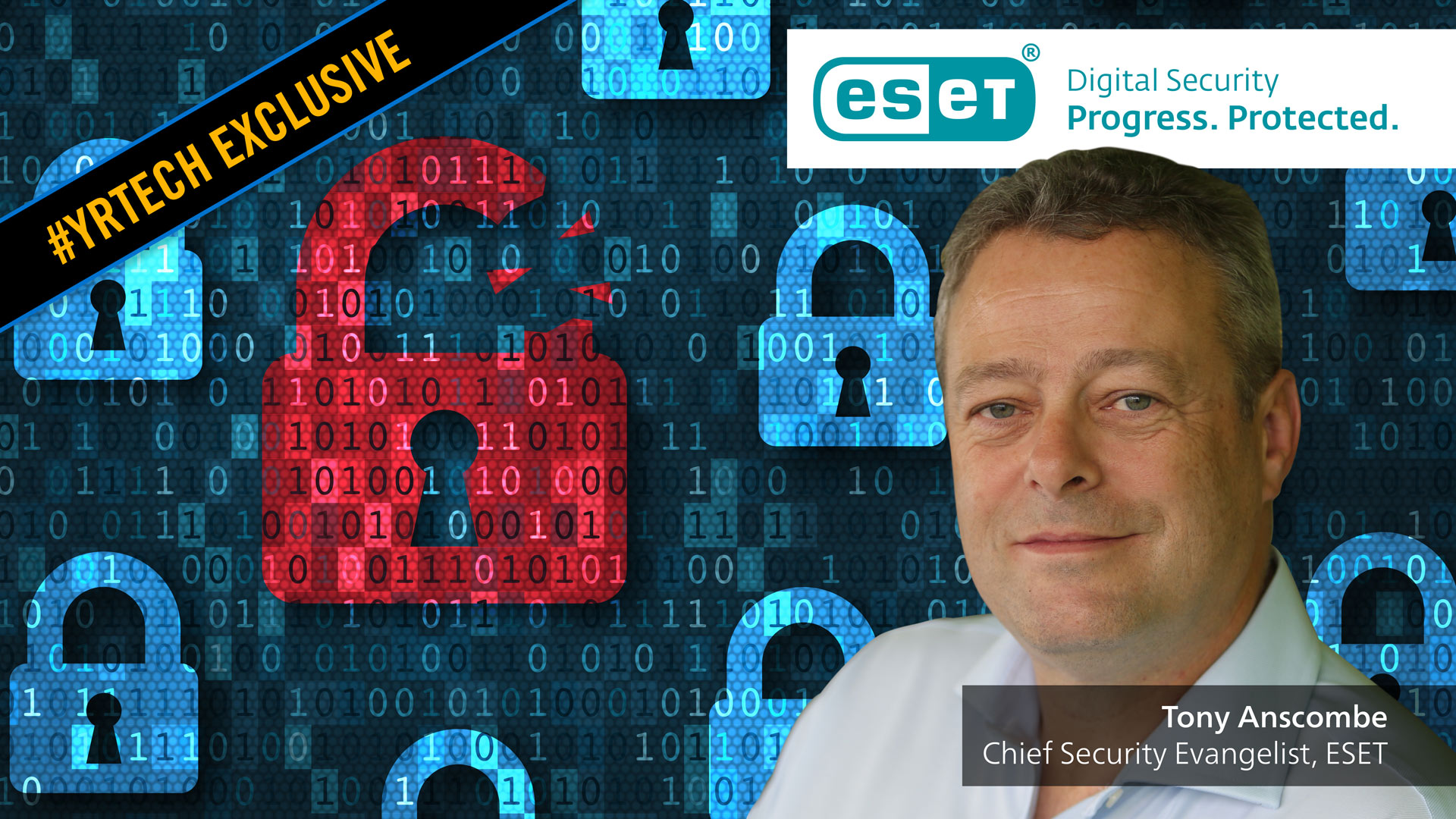In a study focused on supply chain resilience released last year by Supply Chain Canada, in partnership with York Region, one of the key recommendations for manufacturers from experts and relatable for all businesses was to “secure systems and data against cyberattacks.”
Earlier this year, Telus conducted a study on ransomware attacks with a staggering finding that 83% of Canadian businesses surveyed reported attempted attacks and 64% indicated they had experienced one. The good news is there are many simple steps that can be taken now to increase the digital security of your company. These easy actions are important to do as the severity of ransomware and other cyber threats continues to increase.
Recently, ESET, an industry-leading IT security software and services company for businesses and consumers worldwide moved its Canadian headquarters to Markham, York Region.

ESET
Tony Anscombe, Chief Security Evangelist for ESET, has over 20 years of security industry experience and is an established Author, Blogger, and Speaker on the current threat landscape, security technologies and products, data protection, privacy and trust, and Internet safety.
His speaking portfolio includes industry conferences RSA, CTIA, MEF, GlobSEC and Child Internet Safety (CIS). He has been quoted in security, technology, and business media, including BBC, the Guardian, the Times and USA Today, with broadcast appearances on Bloomberg, BBC, CTV, KRON and CBS. Anscombe has served on the board of MEF and FOSI and held an executive position with the Anti-Malware Testing Standards Organization (AMTSO).
As October is Cybersecurity month, Mr. Anscombe offered to share simple, but important steps that any business can take to improve their knowledge around digital security for their business. From identifying the signs of a hack to potential risks and doubling down on digital security, here’s what Tony had to share with businesses across York Region.

How To Tell If Your Computer Has Been Hacked
There are many ways your computer can become compromised and even despite best efforts it can happen to the best of us. There are telltale signs to be aware of that can help you mitigate and deal with a cyber-attack right away.
If you begin to experience occurrences like this your computer may have been hacked:
- Your computer begins running much slower than you’re used to
- The webcam turns on by itself
- New toolbars appear on your browser or random icons appear on your desktop
For more information on these and other telltale signs, continue reading the full article here.

Identifying Potential Security and Privacy Risks
Being at the forefront of technology can bring great advantages to your business, but with every new tool or device you add it is important to identify potential security risks. Knowing what these devices are storing is critical to not only protect your business, but your supply chain partners, customers, and anyone else who may engage with these devices. Securing your business’ data weak points is an ongoing process that should be done proactively. Here is a more in-depth article on how to identify where your business data may need security improvements.

Doubling Down on Your Security with 2FA/MFA
As working habits have changed since the pandemic and working remotely has surged in popularity, the devices being used by your business are now accessing many networks, some may not be as secure as in your office. That doesn’t mean you need to adjust your remote work policies, but rather, ensure that employees are enabling an extra layer of protection known as 2-Factor Authentication or Multi-Factor Authentication. This simple step has been proven to increase device security. With two or more authentication pieces required to login you can stop hacking attempts even if your password was obtained.

Putting it All Together – Trust Nothing, Verify Everything
Zero-trust in today’s technology environment is about instilling the idea of analyzing all of your tech-related systems and processes with a holistic view of the entire digital environment, regardless of location; on-premise, remote, cloud, who owns it, who may be using it, etc. In short, trust nothing and verify everything.
In the world of zero trust the business needs to give more thought to what systems truly need to be accessed for the employee’s function, from what devices and which locations, possibly even extending to limits on access based on the time of day. This shift in thinking needs to be business wide, not just a concept that the IT security team advocate for; there needs to be endorsement from the C-level down, throughout the entire organization.

October is Cybersecurity Month in Canada, for more information and programs, resources, and other information to help your business become cybersafe visit: getcybersafe.ca
